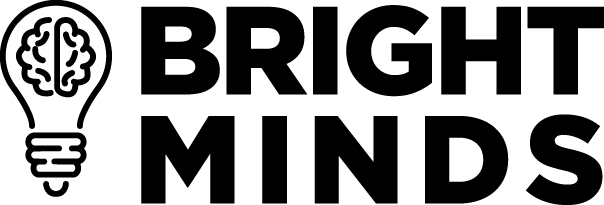In the late 1950s, Albert Hofmann, the Swiss chemist who “discovered” LSD mostly by accident, started experimenting with something even more powerful: magic mushrooms.
Indigenous people in Mexico had been observed using mushrooms in religious rituals by western visitors several years earlier. One of the interlopers sent a sample to Hofmann, who became the first western scientist to identify, isolate, and artificially synthesize the active ingredients, compounds called psilocybin and psilocin.
Recognizing the medical value of the mushrooms, Hofmann’s employer, the pharmaceutical giant Sandoz, soon packaged them into a pill and started marketing a drug called Indocybin. Therapists and researchers were thrilled. Here was a safe pharmaceutical drug, with immense potential to treat a wide range of mental-health pathologies, including depression and addiction!
But then the drug war happened. Psilocybin was classified as a Schedule I drug in 1970. Research, as well as treatment, halted. Indocybin disappeared from pharmacists’ shelves and from therapists’ arsenals. Novartis, Sandoz’s parent company, does not even mention Indocybin in its company history.
Since that point, progress in understanding psilocybin and its therapeutic potential has been mostly frozen in time. Now, the intense interest in psilocybin as a therapy tool and the popular pushes to legalize magic mushrooms are best understood as a “rediscovery,” as well as a reminder of how much research and progress was destroyed by the drug war. Psilocybin knowledge is in many ways a time capsule dating back to the 1960s.
What drugs that could “reboot the brain” might Hofmann or a protege have discovered next, if research into psychedelic treatments wasn’t halted? What would psilocybin-based drugs look like today, with 50 years of progress? For anyone currently treating PTSD or other maladies with psilocybin, in human trials at Johns Hopkins University or via the illicit market, the answer is obvious.
Psilocybin and psilocin (the human body converts the former into the latter) “work” by activating certain neurotransmitters in the brain, including three called 5-HT2A, 5-HT2B, and 5-HT2C.
Since 5-HT2B can cause irregular heartbeat and may lead to complications for patients with heart-valve diseases, figuring out how a mushroom-derived drug could target the other two receptors—and not cause any issues for a patient with heart conditions—intrigues Alan Kozikowski.
Research into what psilocybin-like substances could do was virtually nonexistent during the five decades of the drug war due to onerous controls exerted over Schedule I drugs. Researchers needed to obey strict security and record-keeping protocols. Some advances were made, but they didn’t lead to much. And beyond that, there wasn’t an easy way the knowledge could be translated into a marketable, prescribed product like Sandoz’s Indocybin.
“It certainly slowed things down, if not stopping looking at psilocybin as a treatment for depression,” Kozikowski recently told Observer. If not for that, “Maybe we’d have something on the market by now,” he added. “Maybe we’d be able to treat depression far better than it’s treated now.”
Kozikowski and his company, Bright Minds Biosciences, have picked up Hoffman’s discarded thread, dusting off 50-year-old pharmacology shunted aside by the drug war. A retired professor in medicinal chemistry at the University of Illinois at Chicago, Kozikowksi has patented several compounds that are similar to psychedelic mushrooms, but don’t activate the 5-HT2B receptor, as mushroom-derived psilocybin will do.
Put simply, “We’re trying to reinvent psilocybin,” he said.
But exactly how, and which of the other receptors to target, and in what volume, presents a research question. The research question.
Some patients might want the feelings of empathy, euphoria, and reflection without the physical and cognitive sensations of a “trip.” There are ways to increase the body’s metabolism so that the “trip” time is shortened. But eliminating that altogether activity means the resulting drug may not be an effective treatment. Otherwise, there would be no therapeutic effect.
“What’s important about 2A activity is that it allows one to reset the brain,” Kozikowski said. “It’s a way to rewire the brain. We want 2A activity.”
For this reason, most—if not all—psilocybin-based treatments might require the “guided” therapy seen in experimental mushroom treatments in Canada. Unless, possibly, a therapy just hit the 5-HT2C receptor. Activity at that receptor “can make you feel full, it quiets you down,” he added. “It has all kinds of wonderful effects.”
Kozikowski believes a psilocybin-like drug targeting specific receptors in just the right amount could be an effective treatment for opiate addiction as well as eating disorders—two conditions that the COVID-19 pandemic and subsequent economic havoc and social-distancing isolation can trigger—and treatment-resistant epilepsy.
In animal studies, rats and dogs given drugs that targeted the 5-HT2C receptor showed effects on their “impulse control,” including alterations in nicotine uptake.
“What we’re aiming for is something that’s safe enough that you can take it at night, go to bed, and wake up in the morning with a clarified brain,” he said. “You’ve gotten rid of the pain, you’re no longer depressed.”
Bright Minds is currently exposing zebrafish to “next-generation” psilocybin-based drugs. Kozikowski says he hopes to begin wide clinical trials with a psilocybin-based drug on mice and dogs by the end of 2021.
Whether Bright Minds pursues a drug targeting seizures, or depression, or addiction will depend on results from those animal studies—and how much animal research may depend on how well the company’s IPO goes. Research on humans will eventually follow, and would likely have been completed years ago were it not for the drug war’s interruption.
Originally published on observer.com

